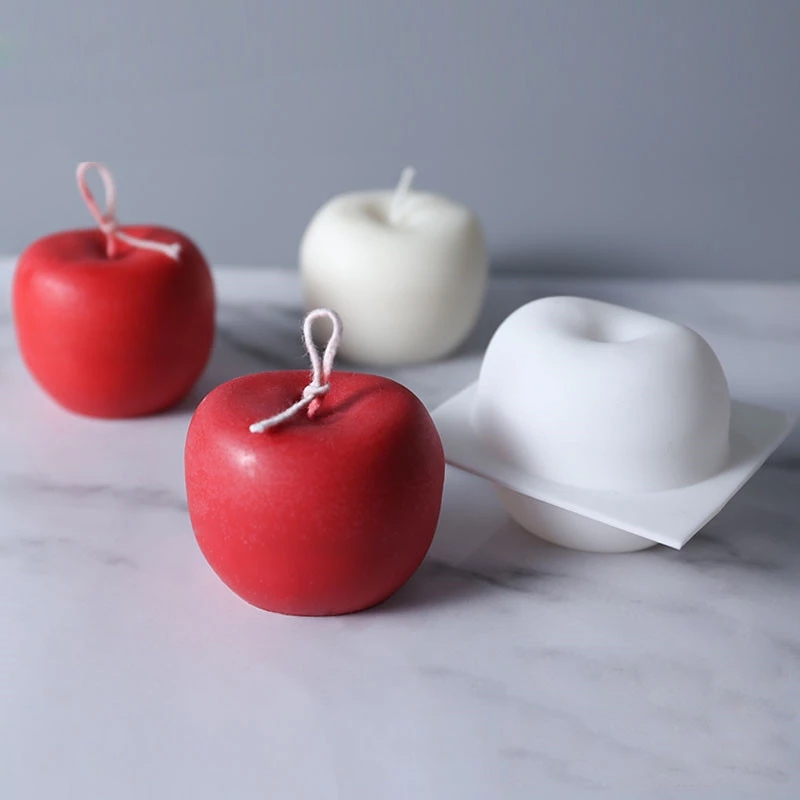Candle making is a timeless craft that has been practiced for centuries, dating back to ancient times. In this article, we will explore the art of candle making, from its rich history to the modern trends and techniques that have made it an increasingly popular hobby and business venture.
Whether you are a beginner looking to make your first candle or an experienced crafter wanting to explore advanced techniques such as marbling and layering, this comprehensive guide will provide you with all the information you need to embark on your own candle making journey.
The process of candle making involves more than just melting wax and adding a wick. It requires careful consideration of the right materials, tools, and techniques to produce high-quality candles that burn evenly and emit pleasant scents. From choosing the right wax for your project to understanding different molding and pouring techniques, mastering the art of candle making is a fulfilling and creative endeavor that allows for endless possibilities.
In addition to being a creative outlet, candle making also presents exciting business opportunities for aspiring entrepreneurs. With the growing demand for unique, handcrafted candles in the market, many individuals have turned their passion for candle making into successful ventures. Whether you are interested in starting a small-scale at-home business or expanding into larger markets, this article will provide valuable insights into turning your love for candle making into a profitable enterprise.
History of Candle Making
The history of candle making dates back to ancient times when candles were primarily made from animal fat or tallow. The earliest known candles were used by the Ancient Egyptians, who made them from reeds dipped in animal fat. From there, the art of candle making spread to other civilizations such as the Greeks and Romans. In these early times, candles were primarily used for practical purposes such as providing light in the absence of electricity.
With advancements in technology and the availability of different materials, the process of candle making evolved over time. Beeswax became a popular choice for candle making due to its pleasant aroma and clean-burning properties. During the Middle Ages, taper candles were commonly used in religious ceremonies and household lighting.
In modern times, candle making has become a popular hobby and craft for people of all ages. The availability of various waxes, fragrances, dyes, and molds has allowed for endless creativity in candle making. Additionally, the demand for unique and handmade products has led to a resurgence in the popularity of artisanal candle making.
| Historical Period | Main Materials |
|---|---|
| Ancient Times | Animal fat or tallow |
| Middle Ages | Beeswax |
| Modern Times | Various waxes, fragrances, dyes |
Choosing the Right Wax for Your Candle Making Project
When it comes to candle making, choosing the right wax is essential for the success of your project. There are various types of wax to consider, each with its own unique characteristics and benefits. The most commonly used waxes are paraffin, soy, beeswax, and palm wax. Each type of wax offers different qualities that can influence the outcome of your candles.
Paraffin wax is a popular choice for many candle makers due to its affordability and ease of use. It has a great scent throw and can hold color well, making it ideal for scented and colored candles. However, some people prefer to avoid paraffin due to its association with petroleum by-products.
Soy wax, on the other hand, is a natural and renewable alternative that has gained popularity in recent years. It has a clean burn and excellent scent throw, making it a favorite among environmentally conscious consumers.
Beeswax is another natural option that produces beautiful, long-lasting candles with a subtle honey scent. While it can be more expensive than other waxes, its natural properties make it an attractive choice for those looking for a sustainable option. Lastly, palm wax is known for its unique crystalline appearance and ability to hold fragrances well. It also has a clean burn and environmentally friendly credentials.
In choosing the right wax for your candle making project, it’s important to consider factors such as cost, environmental impact, fragrance retention, burn time, and appearance. Each type of wax offers its own set of advantages and challenges, so be sure to explore your options and experiment with different waxes to find the perfect fit for your candle making endeavors.
Whether you are making candles as a hobby or considering starting a business in candle making or considering starting a business in candle making,candle hmaking offers endless opportunities for creativity and self-expression while providing soothing atmosphere at home or at any events where they are utilized to bring about important aromas or exhibit beauty through their light ambiance.
Essential Tools and Equipment for Candle Making
When it comes to candle making, having the right tools and equipment is essential for creating beautiful and high-quality candles. The first thing you will need is a double boiler or a dedicated wax melting pot to melt your chosen wax. This will ensure that the wax melts evenly and at a safe temperature.
Next, you will need a thermometer to monitor the temperature of the melted wax. Having a thermometer is crucial because different waxes require different melting temperatures. It’s important to follow the recommended melting temperatures for the specific wax you are using to achieve the best results.
In addition, having a variety of molds or containers is necessary for shaping your candles. Whether you prefer traditional pillar candles or modern container candles, having a selection of molds will allow you to create different types of candles. Along with molds, wick holders, and pre-tabbed wicks are also essential for ensuring that your wicks stay centered while the wax cools and hardens.
| Essential Tools | Equipment |
|---|---|
| Double boiler or wax melting pot | Thermometer |
| Variety of molds or containers | Wick holders and pre-tabbed wicks |
These essential tools and equipment are just the beginning when it comes to candle making. As you delve further into this craft, you may find other specialized tools that suit your unique candle making style and preferences.
Understanding Different Candle Making Techniques
Candle making is a versatile and creative art form that has evolved over centuries, with different techniques being developed and refined over time. Whether you’re a beginner or an experienced candle maker, understanding the various candle making techniques is essential for creating beautiful and unique candles. Here are some of the most common techniques used in candle making:
- Molding: Molding is a classic technique that involves pouring melted wax into a mold to create a specific shape or design. This technique allows for endless possibilities in terms of candle shapes and sizes, from simple pillars to intricate figurines.
- Container: Container candle making involves pouring wax directly into a container, such as a jar or tin, to create a finished product. This technique is popular for its ease and versatility, allowing for customizable designs and scents.
- Hand Pouring: Hand pouring is a more hands-on approach to candle making, where the wax is carefully poured by hand to create layers or custom designs within the candle. This technique requires precision and patience but allows for complete creative control over the final product.
Each technique offers its own set of advantages and challenges, allowing candle makers to explore different methods based on their preferences and desired outcomes. Whether you prefer the precision of molding, the versatility of container candles, or the hands-on approach of hand pouring, there’s a technique that will suit your needs.
Ultimately, mastering these various techniques opens up endless possibilities for creativity in candle making. Experimenting with different methods can lead to unique designs and products that reflect your personal style and vision. Whether you’re crafting candles as gifts for loved ones or looking to start a business venture, understanding these techniques is key to creating stunning candles that stand out in the market.
The Art of Scenting and Coloring Candles
Scenting and coloring candles is an important aspect of candle making that allows creators to express their creativity and personalize their products. Whether you are a beginner or an experienced candle maker, the art of scenting and coloring candles can elevate your creations to new heights. Here are some tips and techniques for adding fragrance and color to your homemade candles:
- Choose high-quality fragrance oils or essential oils specifically designed for candle making. These oils are formulated to disperse evenly throughout the wax and provide a long-lasting scent when the candle is burned.
- Experiment with different fragrance combinations to create unique scents for your candles. Popular choices include floral, fruity, herbal, and woodsy fragrances, but the possibilities are endless.
- When it comes to coloring your candles, consider using dye chips or liquid dyes that are specially formulated for use in candles. Be sure to follow recommended guidelines for the amount of dye to use based on the amount of wax in your recipe.
Adding fragrance and color to your candles not only enhances the aesthetic appeal of the final product but also creates a multi-sensory experience for those who enjoy them. As you continue on your candle making journey, don’t be afraid to think outside the box and try new combinations of scents and colors to make each candle uniquely yours.
Furthermore, keep in mind that certain essential oils and fragrances may have specific guidelines or usage recommendations, so always consult reliable sources or suppliers when selecting scents for your candles. By mastering the art of scenting and coloring candles, you can truly unleash your creativity while delighting friends, family, or customers with beautifully crafted and alluringly scented candles.
Safety Tips for Candle Making at Home
Candle making is a fun and creative hobby that can also be turned into a profitable business. However, it’s important to prioritize safety when engaging in this activity at home. Whether you’re a beginner or an experienced candle maker, following safety protocols is crucial to prevent accidents and ensure a positive candle making experience.
One of the most important safety tips for candle making at home is to work in a well-ventilated area. This is especially true when melting wax, as the fumes can be harmful if inhaled in large quantities. Opening windows or using fans can help ensure proper ventilation during the candle making process.
In addition to proper ventilation, it’s essential to use the appropriate equipment and tools for candle making. This includes heat-resistant containers for melting wax, as well as thermometers to monitor wax temperature. It’s also important to have fire extinguishing equipment nearby, such as a fire extinguisher or baking soda, in case of any unexpected fires during the candle making process.
Lastly, practicing safe handling of hot wax and other materials is crucial for preventing burns and other injuries. Using heat-resistant gloves and being mindful of flammable objects nearby can help reduce the risk of accidents while making candles at home. By following these safety tips, you can enjoy the art of candle making while prioritizing your well-being and avoiding potential hazards.
Candle Making as a Creative Outlet and Business Opportunity
Candle making has long been regarded as not just a practical skill, but also an art form that allows individuals to express their creativity. Whether you are making candles for personal use or looking to start a business, candle making can be a rewarding and fulfilling endeavor.
Personalized Candles as Gifts
Creating customized candles can be a great way to show someone you care. You can incorporate different scents, colors, and even embeds to tailor the candle to the recipient’s preferences. Personalized candles make for thoughtful and unique gifts for birthdays, weddings, holidays, and other special occasions.
Candle Making as a Business
For those looking to turn their passion for candle making into a lucrative venture, starting a candle-making business can be a promising opportunity. With the increasing demand for artisanal and handmade products, there is a growing market for high-quality, handcrafted candles. From selling at local craft fairs and markets to setting up an online store, there are many avenues to explore when it comes to establishing a successful candle-making business.
Marketing Your Candles
In addition to creating beautiful candles, it’s important to develop marketing strategies to promote your products. Social media platforms like Instagram and Pinterest can be valuable tools for showcasing your creations and reaching potential customers. Building an engaging brand story and offering unique packaging can also help set your candles apart in the market.
Candle making not only offers an outlet for creativity but also presents opportunities for entrepreneurial success. By mastering the craft of candle making and understanding the business aspects of selling handmade goods, individuals can turn their passion into a profitable endeavor.
Step-by-Step Guide to Making Your First Candle
If you’re new to the art of candle making, don’t be intimidated by the process – it’s actually quite simple and can be a rewarding creative endeavor. In this beginner’s tutorial, we’ll walk you through the step-by-step process of making your first candle at home.
Gathering Your Materials
The first step in making your own candle is gathering all the necessary materials. You will need wax (such as soy wax or beeswax), a wick, a container to pour the wax into, fragrance oils (if desired), coloring agents (if desired), and essential tools such as a double boiler, thermometer, and stirring utensil.
Melting the Wax
Once you have all your materials and supplies assembled, it’s time to start melting the wax. Using a double boiler or a heat-safe container placed within a pot of boiling water, melt the wax until it reaches the appropriate temperature according to the type of wax being used.
Adding Fragrance and Coloring
After the wax has melted to the proper temperature, you can add fragrance oils and coloring agents if you’d like scented and colored candles. Be sure to mix thoroughly to ensure an even distribution of color and scent throughout the candle.
By following these steps, you’ll be able to create your first handmade candles right at home. With practice, you can eventually experiment with different waxes, scents, colors, and techniques to develop your own unique style of candle making. Whether it’s for personal use or as potential business opportunity, candle making is both fun and rewarding for beginners and seasoned artists alike.
Exploring Advanced Candle Making Techniques
In conclusion, the art of candle making is a rich and diverse craft that has evolved from ancient times to modern trends. From choosing the right wax and essential tools to understanding different techniques such as molding, container, and hand pouring, there are endless possibilities for creating unique and stunning candles. Scenting and coloring candles adds another layer of creativity, allowing for personalized and beautifully scented creations.
Safety is always a top priority when engaging in candle making at home, so being aware of best practices is crucial. Whether it’s for personal enjoyment or as a potential business opportunity, candle making can be a fulfilling creative outlet that allows individuals to express their artistic vision through an array of techniques.
For those looking to take their candle making skills to the next level, exploring advanced techniques such as marbling, layering, and embeds can open up new avenues for creativity. These techniques can result in truly one-of-a-kind candles that showcase the maker’s skill and artistry. As more people continue to embrace the art of candle making, it’s exciting to see how this time-honored craft will continue to evolve and inspire new generations of artisans.
Frequently Asked Questions
How Do I Start Making My Own Candles?
To start making your own candles, you’ll need to gather the necessary supplies such as wax, wicks, fragrance oils, and a container for the candle. You’ll also need to research different candle-making techniques and safety precautions before getting started.
How Profitable Is Candle Making?
The profitability of candle making depends on various factors, such as the cost of materials, labor, and overhead expenses. With proper market research and unique product offerings, candle making can be profitable for small businesses and independent artisans.
Is It Cheaper to Make Candles or Buy Them?
Whether it is cheaper to make candles or buy them largely depends on the scale of production and quality of materials used. For individuals who enjoy making candles as a hobby rather than a business, it may be more cost-effective to buy them from retailers due to economies of scale in manufacturing.

Welcome to my candle making blog! In this blog, I will be sharing my tips and tricks for making candles. I will also be sharing some of my favorite recipes.

